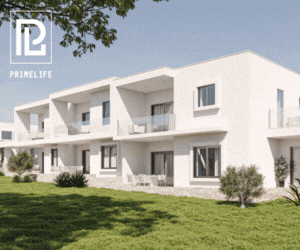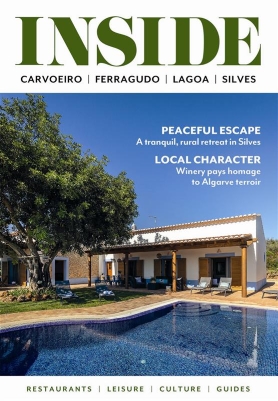TREAD THE ALGARVE’S CLIFFTOPS WITH THIS LOVELY MARKED TRAIL
Formed over millions of years, the cliffs along the coast dominate the Algarve’s landscape, with caves, grottoes, secluded bays and blowholes providing some of the most spectacular scenery around. To make the most of this rich natural heritage, Lagoa Council created the Seven Hanging Valleys walk, a signposted trail high above the beaches that follows the coastline all the way from Centeanes to Marinha/Albandeira beach.
Inaugurated in 2010, the route extends along 5.7km of coastline, and takes around six hours to complete there and back. Of medium difficulty, it’s ideal for avid walkers, and autumn is one of the best times to make the most of it. If, like us, you prefer to do it in stages or walk just part of the way, there are three clear sections that each afford unique and equally wonderful viewpoints.
Before you set off, be sure to wear sturdy trainers (and a hat if the sun is out), take water, a walking stick if necessary – there are some pretty steep bits on the walk – and of course a camera! The route is best avoided after heavy rainfall and on windier days, and beware of large waves in the winter at the points of lower altitude. Other than that, it’s a wonderful walk, as Inside discovered.
Setting off from Centeanes and taking the steps up past Colina Sol hotel (you will understand why there are benches at the top), the path is guided by two parallel red and yellow lines, painted on wooden markers or on rocks. If they cross, you’re going the wrong way, whilst the red line warns of any change in direction. Following the lines and the wooden barriers placed for safety reasons (this is the highest part of the walk at 45.50m above sea level), we walked east until we reached a pretty seating area on the cliffside which looks down to the sea.
After walking along a narrow pathway, in the distance you can see the Alfanzina lighthouse, a highlight of this section of the walk. This is a wonderfully green bit of the clifftops, but with the lovely views comes a more precarious section as you cross the valley. Fortunately, a wooden structure more akin to a bus stop provides a bit of respite a bit further on, and a few metres ahead lies Carvalho beach, a bit of a local secret that was once used by smugglers. Follow the steps down and over the hill, the shapes of the fishing village of Benagil will begin to emerge.
The trail takes you down to the beach, the lowest point of the walk and the perfect excuse to stop off at the café and watch the local fishermen as they go about their daily routine. The second part of the walk begins from the small steps to the left of O Algar restaurant, at the top of the hill that winds to the right. Starting off flat and overlooking the beach and the fishing boats bobbing below, the trail continues until walkers reach the top of the famous Algar de Benagil, a grotto only reachable by boat that’s one of the most iconic images of this area’s coastline.
This stretch of the trail is flanked by woodlands, home to various herbs – as indicated by one of the many information boards that detail the rock formations, fauna and flora found in the area, and emergency contact numbers. Then comes a more difficult bit but well worth the exertion: down into the valley, you cross over a little bridge amongst the cliffs dotted with sink holes. With the sound of the waves beneath your feet and the ever-present cicadas, this section is particularly pretty in the spring, when the orchids and lilies add colour to the surroundings. A scramble up the other side is rewarded with amazing views from the specially made Miradouro Beauty Spot, with the rocks here taking on a very different appearance. And this is when we reach one of the most beautiful beaches in Portugal: Marinha.
This third and final section of the walk is in fact not signposted, but promises one of the most beautiful stretches of the whole trail. Walking down among the pines and natural vegetation, shaded steps bypass the beach and afford pictureperfect views, with small fishing boats providing visits to the caves often zipping in and out of the grottoes. Walkers will come across more natural pits – the safety barriers are there for a reason –, fossils embedded in the rocks and little secluded beaches, one of which can only be reached by foot. An imposing arch formed by years of erosion marks the end of the road, as walkers reach Albandeira, a rocky beach with a small restaurant and its own picnic area. Happy walking.













